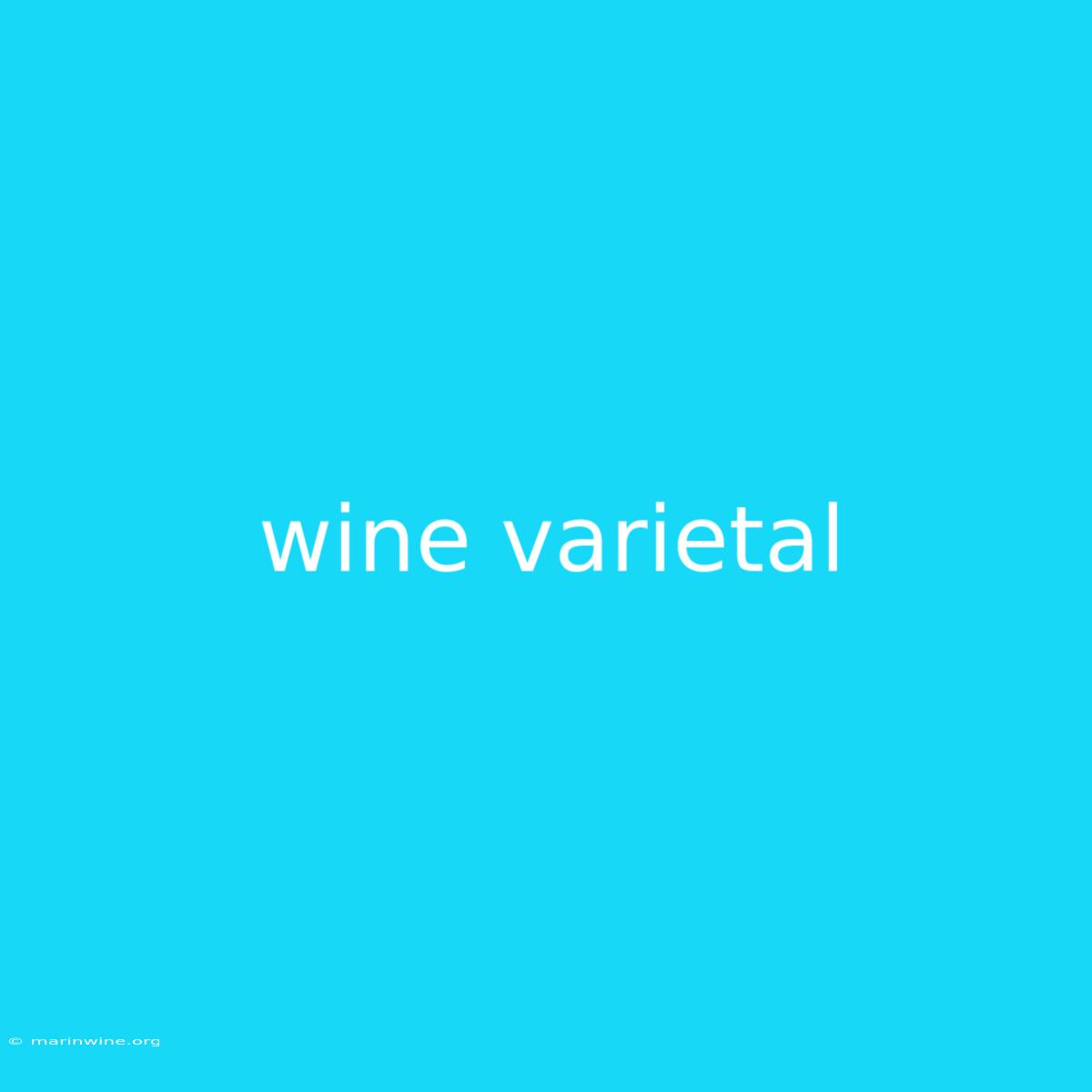Uncorking the World of Wine Varietals: A Journey Through Grape Diversity
Have you ever wondered what makes a Cabernet Sauvignon taste different from a Pinot Noir? It all comes down to the grape! This exploration dives into the fascinating world of wine varietals, uncovering the secrets behind their distinct flavors, aromas, and characteristics.
Why This Matters
Understanding wine varietals is crucial for any wine enthusiast. It allows you to navigate the vast world of wine, making informed choices based on your preferences. Learning about different grape varieties unlocks a deeper appreciation for the artistry and complexity of winemaking.
Key Takeaways of Wine Varietals
| Varietal | Characteristics |
|---|---|
| Cabernet Sauvignon | Full-bodied, bold, with black fruit and earthy notes |
| Merlot | Smooth, medium-bodied, with plum and cherry flavors |
| Chardonnay | Crisp, dry, with citrus and apple flavors |
| Pinot Noir | Light-bodied, elegant, with red fruit and spice notes |
| Sauvignon Blanc | Zesty, grassy, with citrus and tropical fruit flavors |
Wine Varietals: A Deeper Dive
Cabernet Sauvignon: The King of Reds
Cabernet Sauvignon reigns supreme as the most planted red grape variety worldwide. Its signature boldness stems from its thick skin, which contributes to high tannins, acidity, and vibrant flavors. Expect intense notes of blackcurrant, blackberry, cassis, and a hint of cedar and spice.
Facets of Cabernet Sauvignon:
- Origin: Originating in the Bordeaux region of France, it thrives in warm climates.
- Style: Full-bodied, with high tannins and acidity, best enjoyed after aging.
- Regions: Napa Valley (USA), Bordeaux (France), Tuscany (Italy)
- Food Pairing: Red meat, game, rich cheeses
Chardonnay: The Queen of Whites
Chardonnay is another globally popular grape, known for its versatility and ability to adapt to various climates. This white grape delivers a range of styles, from crisp and refreshing to rich and buttery.
Facets of Chardonnay:
- Origin: Burgundy region of France
- Style: Varies from crisp and dry to rich and oaky
- Regions: Burgundy (France), Champagne (France), Sonoma (USA)
- Food Pairing: Seafood, poultry, creamy sauces
Pinot Noir: The Elegant Enigma
Pinot Noir, often described as "the grape of Burgundy," is a delicate and temperamental variety. It produces light-bodied, aromatic wines with complex flavors.
Facets of Pinot Noir:
- Origin: Burgundy region of France
- Style: Light-bodied, with delicate flavors and aromas
- Regions: Burgundy (France), Oregon (USA), New Zealand
- Food Pairing: Salmon, duck, mushrooms
Sauvignon Blanc: The Zesty Delight
Sauvignon Blanc is known for its crisp, refreshing character and vibrant acidity. Its aromas range from grassy and herbaceous to tropical fruit notes.
Facets of Sauvignon Blanc:
- Origin: Bordeaux region of France
- Style: Crisp, acidic, with grassy and citrusy flavors
- Regions: Sancerre (France), Marlborough (New Zealand), Loire Valley (France)
- Food Pairing: Goat cheese, salads, shellfish
Varietal Exploration: A Table of Insights
| Varietal | Origin | Style | Key Flavors & Aromas |
|---|---|---|---|
| Cabernet Sauvignon | Bordeaux | Full-bodied, tannic, bold | Blackcurrant, blackberry, cassis, cedar, spice |
| Merlot | Bordeaux | Medium-bodied, smooth | Plum, cherry, vanilla, chocolate |
| Chardonnay | Burgundy | Crisp, dry, oaky | Citrus, apple, pear, vanilla, buttery |
| Pinot Noir | Burgundy | Light-bodied, elegant | Red fruit, spice, earthiness, floral notes |
| Sauvignon Blanc | Bordeaux | Crisp, acidic, grassy | Gooseberry, lime, passion fruit, herbaceous notes |
FAQ for Wine Varietals
Q: How do I know which varietal to choose? A: Start by exploring your taste preferences. Do you prefer bold and robust wines or lighter and more delicate styles?
Q: Can a wine be made from more than one varietal? A: Yes, many wines are blends of different grapes. This allows winemakers to create unique flavor profiles and enhance complexity.
Q: What is the difference between a varietal and a blend? A: A varietal is a wine made solely from one grape variety. A blend is a wine made from a combination of grapes.
Q: How can I learn more about wine varietals? A: Explore wine tasting events, read articles and books, or take online courses.
Tips for Exploring Wine Varietals
- Start with a tasting: Try a flight of wines from different varietals to discover your favorites.
- Seek out information: Read wine labels, explore websites, and talk to wine professionals.
- Don't be afraid to experiment: Branch out and try different styles within the same varietal.
- Consider the region: The terroir (soil, climate, and other environmental factors) influences the flavor of a wine.
- Pair with food: Experiment with different food pairings to enhance your wine experience.
Summary of Wine Varietals
This exploration has unveiled the vast diversity of wine varietals, each offering a unique journey for your palate. From the bold Cabernet Sauvignon to the delicate Pinot Noir, the world of wine is brimming with exciting flavors waiting to be discovered. Embrace the exploration, indulge in the aromas, and savor the complexity of each varietal.
Closing Message: The next time you stand before a wine rack, remember the world of grapes waiting to be uncorked. Embrace the adventure and let your taste buds embark on a journey of discovery. Cheers!

